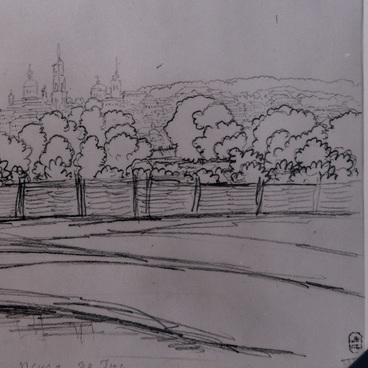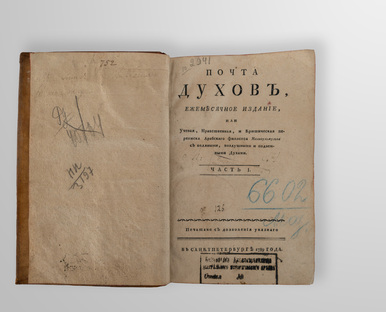The displayed painting was donated to the museum by a Moscow collector in 1977. It was painted by an unknown artist, but some stylistic features and details (for example, the depiction of a German village) suggest that the painter belonged to the German school.
The landscape belongs to the pastoral genre that was popular in the 18th century.
Pastoral images (from the Latin word meaning “shepherd”) were popular among aristocrats who were far from the reality of rural life. The embellished scenes of the countryside were populated by idealized sometimes mythological characters.
The first idyllic image of the pastoral lifestyle was created by the Italian poet Jacopo Sannazaro in his 1504 poem “Arcadia”. After that, the genre became widespread in painting, music, and other forms of art. It reached the peak of its popularity during the Baroque and Rococo periods. In the first half of the 19th century, it resonated with Romanticism which emphasized the spiritual value of humans.
All pastoral paintings feature people (mostly villagers) living in harmony with nature. The role of nature is paramount and cannot be reduced to simply being the background of such images. The paintings are characterized by muted, slightly blurred colors, the absence of blinding light, and a lack of obvious historical context.
The displayed landscape was in dismal condition. The canvas had broken into two boards, the varnish had darkened, and the composition could only be guessed from the title. The painting was restored in 2012–2013 by Olga Karasyova who consulted the staff of the State Research Institute for Restoration.
Olga Karasyova is an experienced restoration artist from Penza who has restored around 200 paintings and icons. She has described her work in an interview with Tatyana Guseva and Anatoly Volnikov, “Each work is unique, the process is never exactly the same. Each piece has its own hidden problems that must be discovered.” When working with old artworks, care should be taken not to damage them. All works are undertaken only to repair the defects so that as many authentic elements as possible are preserved.

